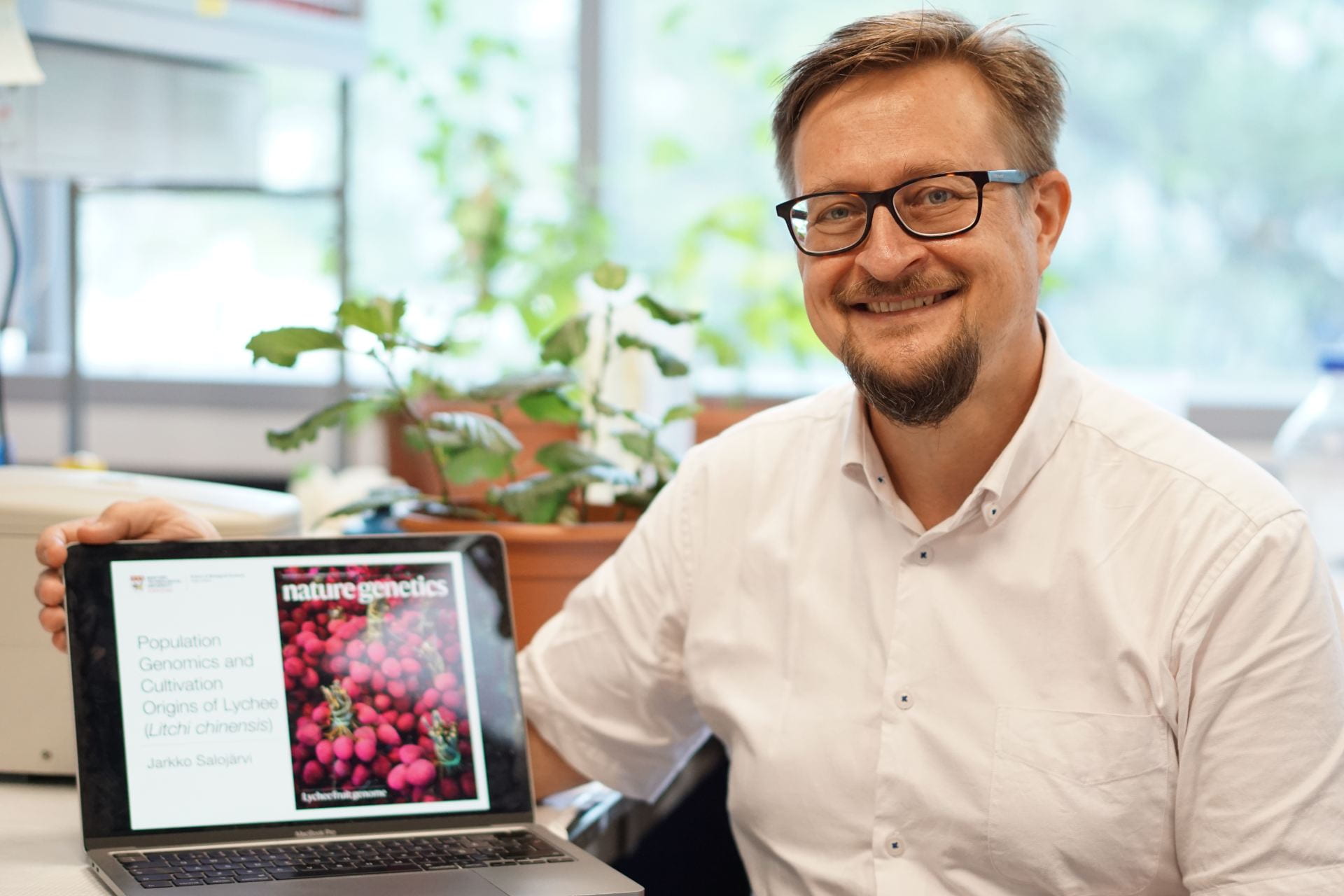Lychees are typically harvested from late May to early July. What if there was a way to enjoy more and better-tasting lychees for longer time periods?
Assistant Professor Jarkko Salojärvi from the School of Biological Sciences at Nanyang Technological University together with a team of Chinese and American researchers not only made novel insights into the domestication history of lychee, but they also identified the underlying genetics of this important tropical fruit that encode important agricultural traits. To accelerate lychee breeding, the team developed a reference genome as well.
“With the genome information we can massively accelerate the development of cultivars with different flowering times, such that the lychee fruit harvest period is extended, or then cultivars with more fruit flesh and better taste,” Asst. Prof. Salojärvi explained.
The study made by the team was published in Nature Genetics in January 2022, with their significant discoveries on Lychee featured on the cover of the Vol. 54 Issue 1 of Nature Genetics.

Assistant Professor Salojärvi with the cover of Nature Genetics Vol. 54 Issue 1
History of Lychee
Lychee is native to Southeast Asia and has a very long breeding history of over 2000 years. This makes it a particularly exciting crop species to study, because the genome information gives a view to the breeding history through all that time. The oldest known living lychee tree, located in the Fujian province of China, is over 1250 years old and is still bearing fruits today.

At the beginning of the project Asst. Prof. Salojärvi visited the over 1250 year-old oldest known living lychee tree ‘Songxiang’ in Fujian, China.
Plant breeding produces better crops
Today, modern crop cultivars are very far diverged from their wild relatives when measured in terms of yield per hectare or by the size and taste of their fruits. Much of this improvement is due to plant breeding which has been carried out since the dawn of agriculture when humans first started cultivating plants for food.
Using the genome data, Asst. Prof. Salojärvi was able to follow how plant breeding had progressed in lychee at different stages of cultivation and track down the process that resulted in the modern cultivars of today. There exists some commonly accepted general principles for obtaining high-yielding cultivars, but now, they were able to provide some answers as to how these rules of thumb might work.
“From our analysis on the breeding history of lychees, we discovered two independent domestication origins, in Yunnan and in Hainan, where individual lychee trees with good yield were directly taken from the wild and put to field,” Asst. Prof. Salojärvi said. One of the high quality cultivars, ‘Feizixiao’, then came about as a cross of descendants of these two cultivation events. Understanding of the breeding history will help in making more informed decisions when developing new crop species.
Reference genome speeds up breeding process
Since the lychee fruits grow on trees, it takes around ten years for the plant to mature and produce fruits. Because of these long generation times, traditional plant breeding is a very slow process, incorporating a lot of trial and error in finding out proper individuals to cross and then waiting to observe if there was any improvement in the progeny.
In this work, the team developed a reference genome of lychee, Litchi chinensis, and carried out a genome study on the wild representatives as well as a set of commercially important cultivar lines. Having a reference genome for a crop species makes it possible to accelerate the plant breeding process, because they could use the information in the genome, for example, to select which individuals to cross. As a first application, the team already identified a position in the genome which may be the underlying cause for different flowering times of the cultivars.
“With similar studies in other crop species my hope is that we can develop a general, genome-informed approach for breeding high-yielding cultivars. This would accelerate the breeding process of long-lived crops, such as fruit trees, and perhaps also help in introducing totally new crops from the wild,” Asst. Prof. Salojärvi shared.
